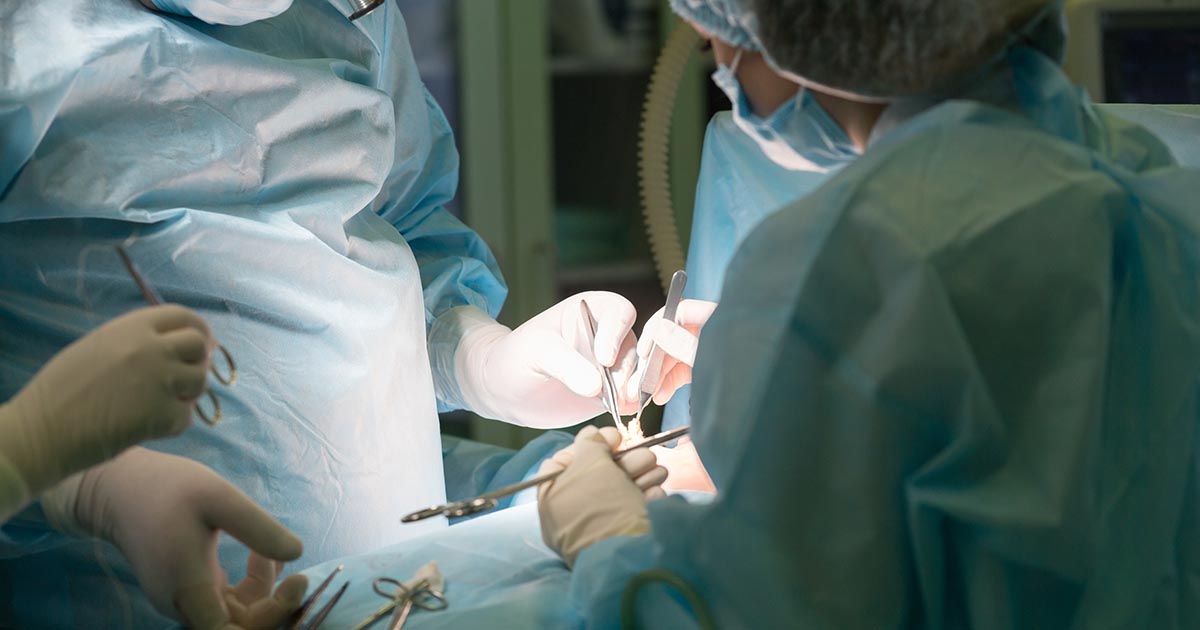Treatment Options For Benign Prostatic Hyperplasia
Benign prostatic hyperplasia is a condition that primarily occurs in aging men. Roughly half of all men over the fifty have this condition, and it can cause many difficulties. The prostate is a gland situated near the neck of the bladder, and it can grow as you age. This can be an issue because the enlarged prostate may make it difficult to empty the bladder. Men with benign prostatic hyperplasia often end up feeling sudden urges to urinate but find it difficult to start urinating or stop leaking in between bathroom trips. Benign prostatic hyperplasia may be unpleasant, but there is some hope for patients.
Laser Therapy

Laser therapy is a method for getting rid of excess tissue in the prostate. It uses a laser to destroy prostate gland tissue and return the prostate to a healthy size. This kind of therapy is especially useful for individuals who take blood-thinning medications that keep them from being a good candidate for other types of benign prostatic hyperplasia treatments. Since it immediately removes all the extra prostate tissue, it immediately relieves symptoms.
There are two main types of laser therapy. Ablative procedures focus on getting rid of tissue around the urethra that is obstructing urine flow, and they use a kind of laser that immediately vaporizes tissue. Enucleative options use a different treatment that removes tissue without destroying it, so doctors can test the tissue for cancer or other issues.
Embolization

Embolization is still a relatively experimental treatment for benign prostatic hyperplasia. It is a non-surgical procedure that does not involve directly removing any prostate tissue. Instead, the process involves a doctor inserting a tiny cannula into a vein in the arm or groin and using the cannula to lodge an embolus in the bloodstream. This essentially means they are lodging an artificial clot to block blood flow to or from the prostate gland. Without enough blood flow, the prostate gland may begin to shrink.
The current results are successful, but the procedure is still new enough that there is not a lot of information on long-term outlooks for men with benign prostatic hyperplasia. However, it is still becoming increasingly popular because it does not require surgery or a lengthy medical regimen. After the simple, outpatient surgery, men recovery quickly and can go back to normal activities.
Transurethral Needle Ablation

Transurethral needle ablation is a benign prostatic hyperplasia treatment that relies on radio waves. The equipment uses needles to transmit radio waves to prostate tissue. The radio waves heat the tissue until it is destroyed. Eventually, the prostate will shrink due to the procedure, and then there will be less construction around the urethra and bladder.
This is an outpatient procedure, which means you do not have to undergo general anesthesia or spend the night in a hospital. Instead, you will just take a mild sedative that makes you sleepy and then get local anesthesia in the prostate area. It will take quite a few weeks to notice any results because the body will gradually break down prostate tissue after the procedure. It is quite effective for years afterward, and side effects like ejaculatory dysfunction are rare.
Prostatic Urethral Lift

Unlike most other types of procedures for treating benign prostatic hyperplasia, a prostatic urethral lift does not rely on removing tissue from the prostate gland. Instead, this is a procedure that just focuses on relieving pressure around the urethra. This minimally invasive surgery can be done under either general or local anesthesia. During the procedure, a surgical device is guided up the urethra. It then pushes the prostate tissue back from the urethra, and a needle sutures the tissue to keep it in the lifted position.
Eight to ten sutures are used on average, and they remain in the prostate gland even after the surgery. It will take a few weeks for a patient to recover, and as the swelling goes down, there will be noticeable improvement. Since a prostatic urethral lift does not remove nerves in the area, erectile and ejaculatory functions remain intact.
Prostatectomy

If other treatments are not working, a prostatectomy may be necessary. This is a surgical procedure that involves moving some or all of the prostate gland. Since it is a serious medical procedure, patients need to check into a hospital and get general anesthesia. There are several different types of prostatectomies depending on where you get an incision and how much of the prostate is removed. During the surgery, the surgeon will make an incision along either the perineum or the lower part of the abdomen. They will then either remove the entire prostate gland or just get rid of part of it.
A surgery that involves only removing part of the prostate is done to spare sensitive nerves in the area. Thanks to new surgical techniques like laparoscopy and robot-assisted surgery, prostatectomies are no longer as difficult to recover from as they used to be. You will just have some soreness for a few weeks and need to wear a catheter for a little while.
